Finding the perfect tool is critical to improving your IT Service Management (ITSM) project. If you find yourself caught in the Cherwell Service Management vs. ManageEngine dilemma and can't decide which way to go, you've come to the right place.
In this blog post, we’ll delve into the capabilities, benefits, and limitations of both Cherwell Service Management and ManageEngine. However, that's not all – we’ll also introduce you to an exceptional alternative: InvGate Service Management, a service desk software that may be the ideal fit for your organization's ITSM needs.

Table of contents
- TL;DR
- What is Cherwell Service Management?
- What is ManageEngine?
- Considering InvGate Service Management as an ITSM solution alternative.
TL;DR
- Cherwell Service Management's positive aspects include its user-friendly interface, extensive customizability, and Low-Code/No-Code approach. However, users dislike that Ivanti purchased it, and the company is now pushing towards Ivanti Neurons. In addition, they highlight performance issues and customization challenges.
- ManageEngine is praised for its diverse product portfolio and high growth. At the same time, it has been said that its integrations beyond Zoho Ecosystem can be limited and there has been issues with vulnerabilities. In 2023, ManageEngine faced a notable setback with the discovery of two significant vulnerabilities across 24 of its products.
- InvGate Service Management, on the other hand, provides streamlined ITSM setup, flexible deployment, robust ticketing and incident management, and self-service capabilities, emphasizing cost-effectiveness and innovation.
We tried to be as thorough as possible, but if you don't have enough time to read it through and through, here's (another) TL;DR: InvGate Service Management can do everything we say here, and you can test it right away for free for 30 days.
Most looked-at features by buyers
When assessing ITSM solutions, buyers tend to focus on specific features that align with their organization's needs. Understanding which functionalities are most important can help make an informed decision. Now, let's explore the key features that prospective buyers typically prioritize during the ITSM tool comparison process.
- User experience and interface - Buyers consider the platform's user-friendliness and intuitive interface, as these factors can enhance user adoption and productivity. Mobile accessibility is also crucial for organizations with remote or mobile workforces.
- Ticketing and Incident Management - Buyers look for robust ticketing systems in their help desk software that efficiently handle and track customer issues or incidents. The features include creating, assigning, tracking, and prioritizing tickets, SLA Management, and escalation workflows.
- Pricing and support - Buyers evaluate the solution's cost-effectiveness, including licensing models, subscription plans, and additional costs for features or users. The availability of customer support, documentation, and training resources also influences decision-making.
- Automation and workflow - Efficient automation and workflow capabilities save time and effort. Buyers consider features such as automation rules, SLA-driven workflows, approval processes, and integrations with other tools or systems.
- Integration and collaboration - Integration with other tools and systems, such as CRM, Project Management, or communication platforms, can streamline workflows and ensure data consistency.
- Self-service and knowledge base - Buyers highly value self-service capabilities that empower employees or customers to find answers to common issues independently. A comprehensive knowledge base system with easy search functionality, FAQs, and guides can enhance self-service options.
- IT service catalog - Some organizations may require a service catalog that allows users to request specific IT services or resources. This catalog streamlines service requests, improves visibility, and facilitates effective service delivery.
- ITIL compliance - Many organizations adhere to ITIL best practices for managing IT services. Buyers may seek solutions that support ITIL processes such as Incident Management, Problem Management, Change Management, and Asset Management.
- Reporting capabilities - Buyers often look for reporting and analytics features to gain insights into service performance, team productivity, customer satisfaction, and SLA compliance. Customizable dashboards and pre-built reports hold significant value in this regard.
- Scalability and customization - Organizations with evolving needs prioritize solutions that can accommodate their growth and allow customization. The ability to create custom fields, workflows, and extensions/plugins is crucial for tailoring the solution to unique business requirements.
What is Cherwell Service Management?
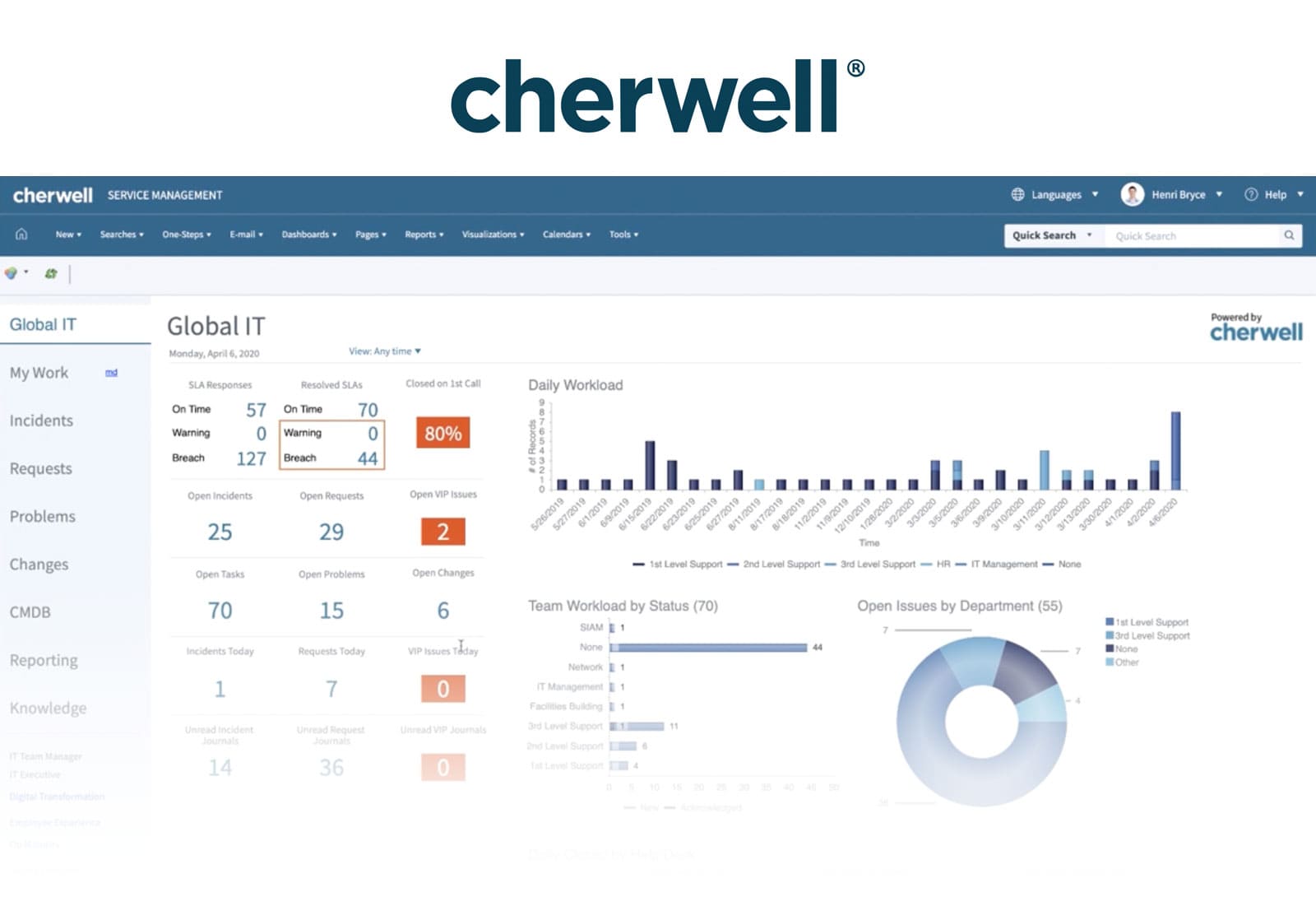
Cherwell Service Management by Ivanti is a platform designed for IT Service Management that effectively caters to the needs of service departments without the need for coding or scripting. It stands out by providing automated IT service delivery through a comprehensive set of pre-built tools.
Cherwell Service Management has noteworthy features such as codeless architecture, drag-and-drop functionality, and automated workflows.
Moreover, Cherwell Service Management includes Project Management capabilities. It introduces a unique feature called Mergeable Applications ('mApps'), enabling users to share customized applications, extensions, and improvements without impacting the system's core functionality.
Additionally, Cherwell Service Management supports multiple languages and offers deployment options as a Software-as-a-Service (SaaS) solution or through on-premise deployment. It also integrates with Ivanti Neurons, a platform that enhances system performance and security through predictive, self-healing, and autonomous remediation capabilities.
What users like from Cherwell Service Management
Cherwell has received positive customer feedback, as evidenced by reputable sources such as Gartner. Here are some of the benefits cited.
- User-Friendly interface - The platform offers an intuitive and user-friendly interface designed to improve usability and facilitate efficient interactions with the system.
- Simplified development - Cherwell Service Management adopts a low-code/no-code approach, enabling users to swiftly set up and implement new features without requiring extensive coding knowledge or expertise.
- Automation and Workflow Management - The tool excels in automating tasks, empowering users to design and execute complex workflows tailored to their requirements.
- API integrations - The platform supports seamless connectivity with other systems through API integrations, enhancing its overall functionality.
- Extensive customization - Users appreciate the platform's broad range of customization options, which allow them to personalize various aspects of the system, including form fields and workflows, to suit their specific needs.
What users don’t like from Cherwell Service Management
Although Cherwell has notable strengths and positive aspects, it has also received feedback from customers highlighting their concerns and dislikes regarding specific elements of the platform. After analyzing reputable sources such as Gartner, here are some areas of dissatisfaction mentioned.
- Pushing towards Ivanti - Following Ivanti's acquisition of Cherwell Software, customers have expressed dissatisfaction with the sales approach towards Ivanti Neurons, an alternative platform. The sudden shift in focus has not been well-received by Cherwell's existing customer base, leading to dissatisfaction.
- Performance concerns - Certain users have faced performance issues, especially when working with large databases or handling extensive groups of technicians. These performance problems can impact system responsiveness, causing frustration among users.
- Challenges with customization - Although Cherwell offers extensive customization options, some users have encountered difficulties and time-consuming tasks when attempting to develop and customize certain elements, particularly when creating new Business Objects and Forms.
- Bugs and upgrade issues - Users have reported encountering bugs and challenges during platform upgrades. Poorly planned releases have led to problems that require resolution, negatively affecting the user experience.
- Customer support - Some users have criticized the level of support provided, citing slow response times and a perceived reluctance to acknowledge software issues as bugs.
- Outdated user interface - Certain users have expressed dissatisfaction with the graphical user interface (GUI) of Cherwell, deeming it outdated and less responsive, particularly when comparing the web version to the desktop application.
What’s Cherwell Service Management’s argument over ManageEngine?
Cherwell Service Management presents compelling arguments in its favor when compared to ManageEngine. While ManageEngine boasts a diverse product portfolio, competitive pricing, and high growth potential, Cherwell Service Management offers distinct advantages, including:
- Simplified development - Cherwell adopts a low-code/no-code approach, allowing users to swiftly set up and implement new features without extensive coding knowledge.
- User-friendly interface - Cherwell provides an intuitive and user-friendly interface designed to enhance usability and facilitate efficient interactions with the system.
- API integrations - The platform supports seamless connectivity with other systems through API integrations, enhancing its overall functionality.
- Automation and workflow management - Cherwell excels in automating tasks and empowering users to design and execute complex workflows tailored to their requirements.
- Extensive customization- The tool offers a broad range of customization options, allowing users to personalize various aspects of the system to suit their specific needs.
What is ManageEngine?
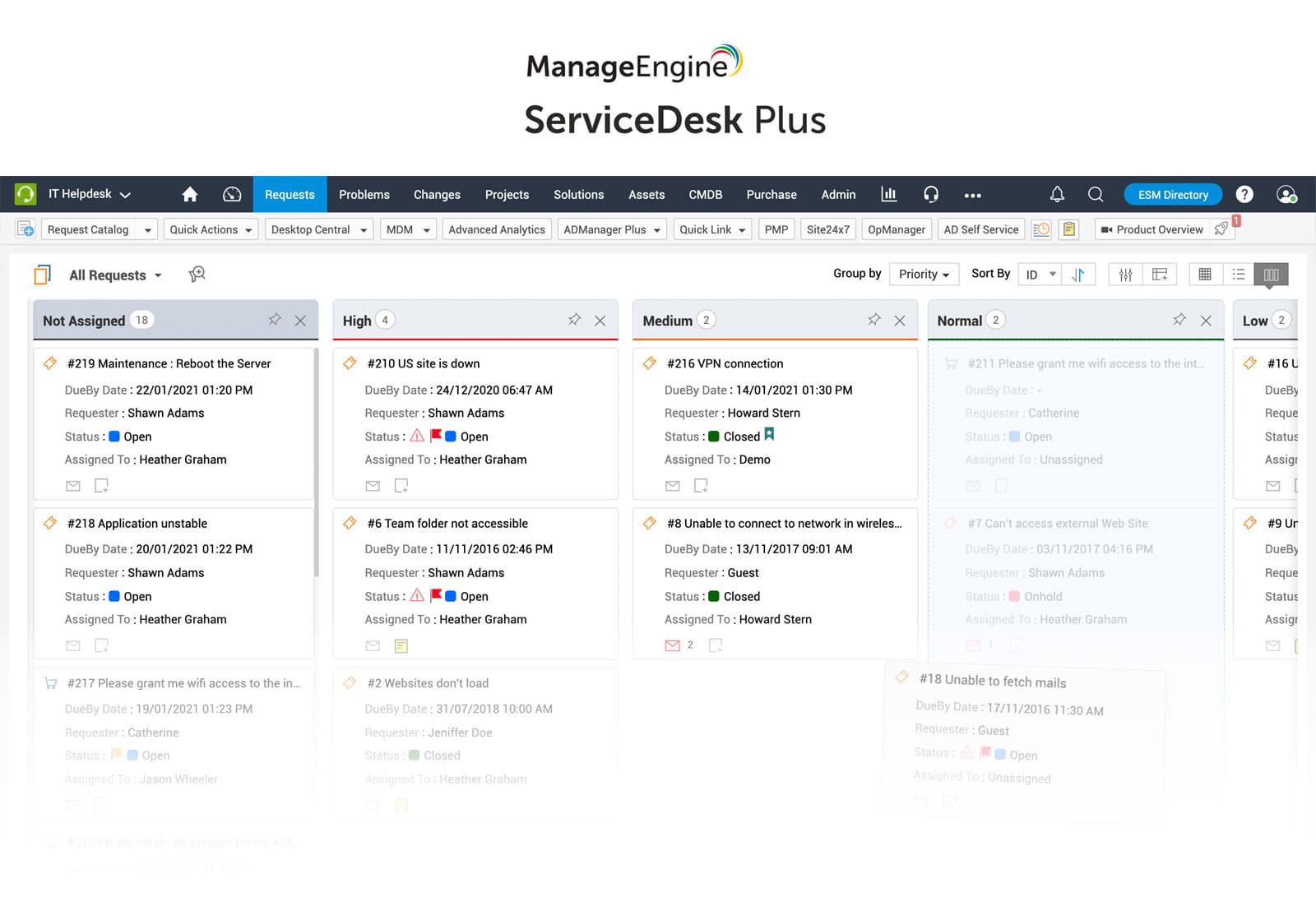
ManageEngine, previously known as AdventNet Inc., underwent a rebranding in 2009 and is now operating under the name Zoho Corporation. ManageEngine specializes in delivering comprehensive IT Management solutions that cater to businesses of various sizes, focusing on small to midsize enterprises.
The company's headquarters are located in Pleasanton, California, and it has a significant global presence, serving over 180,000 customers worldwide.
One of ManageEngine's flagship offerings is ServiceDesk Plus, a platform that provides flexible deployment options, including both cloud-based and on-premise solutions. ServiceDesk Plus encompasses various capabilities, covering IT Service Management (ITSM) and IT Asset Management (ITAM) In the Gartner Magic Quadrant, ManageEngine holds the position of a Challenger, highlighting its competitive stance in the market.
What users like from ManageEngine
ManageEngine has received customer recognition and praise, as evidenced by analysis from reputable sources such as Gartner. Let's look at some of the key benefits these customers have highlighted.
- Diverse product portfolio - ManageEngine has a comprehensive range of complementary products that encompass various areas such as endpoint management, network monitoring, application monitoring, and active directory management solutions. Leveraging the low-code development capabilities and line-of-business integrations offered by its parent company, Zoho, ManageEngine provides a broad set of platform capabilities and leverages cross-selling opportunities to deliver enhanced value to its customers.
- Competitive pricing - ManageEngine differentiates itself through its competitive pricing strategy, offering highly cost-effective ITSM solutions. With multiple pricing tiers available, the platform caters to various budgets, making it an attractive choice for midmarket customers and larger organizations seeking value-driven solutions.
- High growth - ManageEngine exhibits strong growth potential, evident in its flexible deployment models and successful positioning in the midmarket segment. In 2021, the company experienced remarkable revenue growth and significantly expanded its customer base. Its success has been particularly notable in the enterprise sector, solidifying its position as a rapidly growing player in the industry.
What users don’t like from ManageEngine
Although ManageEngine has numerous strengths and positive attributes, customers have expressed concerns and dislikes regarding certain platform aspects. These areas of customer concern have been identified by analyzing reputable sources such as Gartner. Let's explore some of the specific areas that have raised customer apprehension.
- Unclear ITSM differentiation in marketing - ManageEngine's marketing efforts often fail to highlight its unique value proposition in the ITSM market effectively. By predominantly emphasizing common themes like low-code development, customer privacy, and deployment flexibility, the vendor struggles to stand out among more experienced buyers in the market.
- Product innovation limitations - ManageEngine focuses primarily on process enhancements, integrations, and customization support rather than pushing the boundaries of product innovation. While the company has incorporated some AI/ML capabilities in areas such as field and template recommendations, it still lags behind more advanced products in this category.
- Security vulnerabilities - In 2023, ManageEngine encountered a significant setback with the discovery of two critical vulnerabilities across 24 of its products. These vulnerabilities were rated 9.8 out of 10 on the severity scale, as they could potentially enable remote execution of malicious code. However, the company promptly addressed the situation by releasing patches to mitigate the vulnerabilities and reinforce security measures.
- Limited integrations beyond Zoho Ecosystem - The platform's integrations and extensibility are strongest when combined with other ManageEngine and Zoho ecosystem products. This may pose challenges for customers seeking seamless integration with popular ITOM tools outside of the Zoho ecosystem, potentially requiring them to develop custom API connections.
What’s ManageEngine’s argument over Cherwell Service Management?
ManageEngine presents compelling arguments in favor of its platform compared to Cherwell Service Management. While Cherwell Service Management has its strengths, ManageEngine offers distinct advantages that make it a strong contender. Here are some key points that highlight ManageEngine's argument over Cherwell Service Management.
- Diverse product portfolio - ManageEngine boasts a comprehensive range of complementary products covering various areas, including endpoint management, network monitoring, application monitoring, and active directory management solutions.
- Competitive pricing - ManageEngine differentiates itself through its competitive pricing strategy, offering highly cost-effective ITSM solutions.
- High growth potential - ManageEngine has demonstrated strong growth potential, as evidenced by its flexible deployment models and successful positioning in the midmarket segment.
Considering InvGate Service Management as an ITSM solution alternative

When implementing an effective ITSM solution, organizations have a range of options to choose from. While Cherwell Service Management and ManageEngine have long been recognized as popular choices in the industry, a third alternative that deserves attention is InvGate Service Management.
InvGate Service Management is a robust ITSM platform that provides comprehensive features and capabilities to streamline IT service delivery and enhance the overall support experience. Let's explore what makes InvGate Service Management a promising contender in the ITSM landscape.
1. Streamlined Ticketing and Incident Management
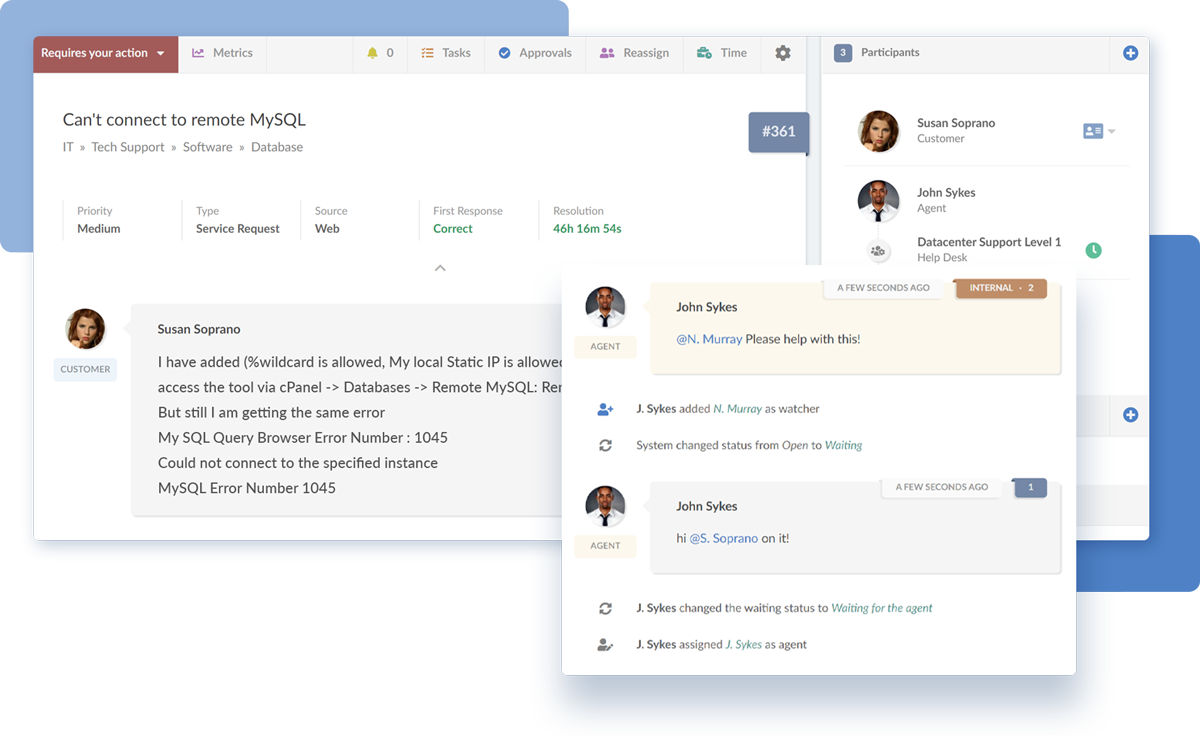
InvGate Service Management stands out for its efficient Ticketing and Incident Management capabilities. It enables IT teams to track, collaborate, and resolve tickets effortlessly using features like automated routing, customizable workflows, and SLA Management. These functionalities enhance the efficiency of Incident Management processes.
2. User-friendly and intuitive interface
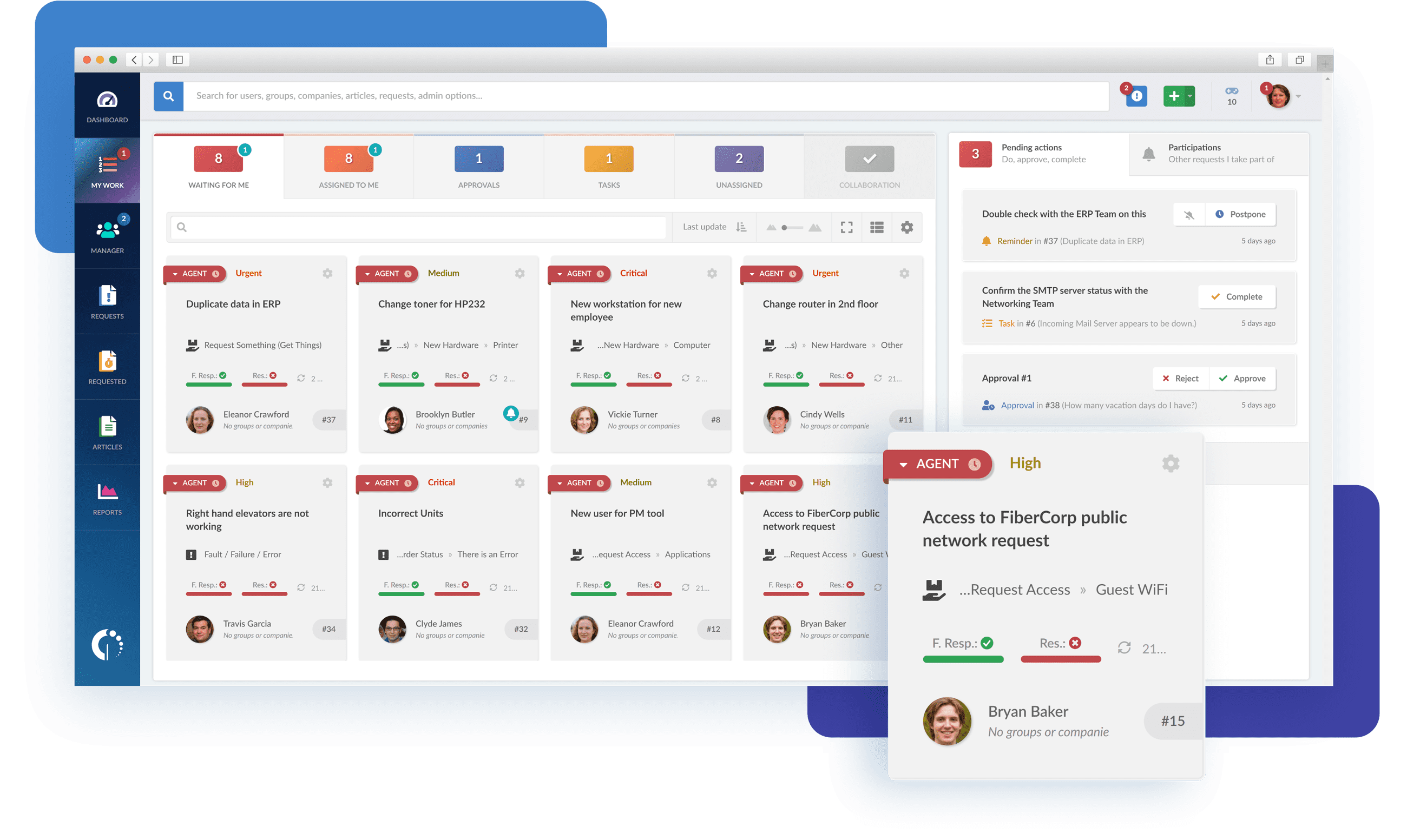
InvGate Service Management boasts a user-friendly and intuitive interface, ensuring effortless navigation and utilization for both IT teams and end-users. With its streamlined design and intuitive workflows, the platform offers a smooth and efficient user experience, reducing the learning curve for new users.
3. Holistic Asset Management
InvGate Service Management integrates IT Asset Management, enabling organizations to track and manage their IT assets throughout their lifecycle effectively. It includes IT Asset Discovery, Inventory Management Tools, Software License Management, and maintenance scheduling.4. Cost-effective solution
Compared to alternatives like Cherwell Service Management and ManageEngine, InvGate Service Management provides a cost-effective solution without compromising functionality. It offers a robust set of ITSM features at a competitive price, making it an appealing choice for organizations seeking affordability without sacrificing functionality.
5. Customization and flexibility
 InvGate Service Management offers extensive customization and flexibility, allowing organizations to tailor the platform to their specific needs and workflows. Administrators can easily configure and adapt the system to align with their IT processes and business requirements, resulting in a more personalized ITSM experience.
InvGate Service Management offers extensive customization and flexibility, allowing organizations to tailor the platform to their specific needs and workflows. Administrators can easily configure and adapt the system to align with their IT processes and business requirements, resulting in a more personalized ITSM experience.
6. Robust self-service capabilities
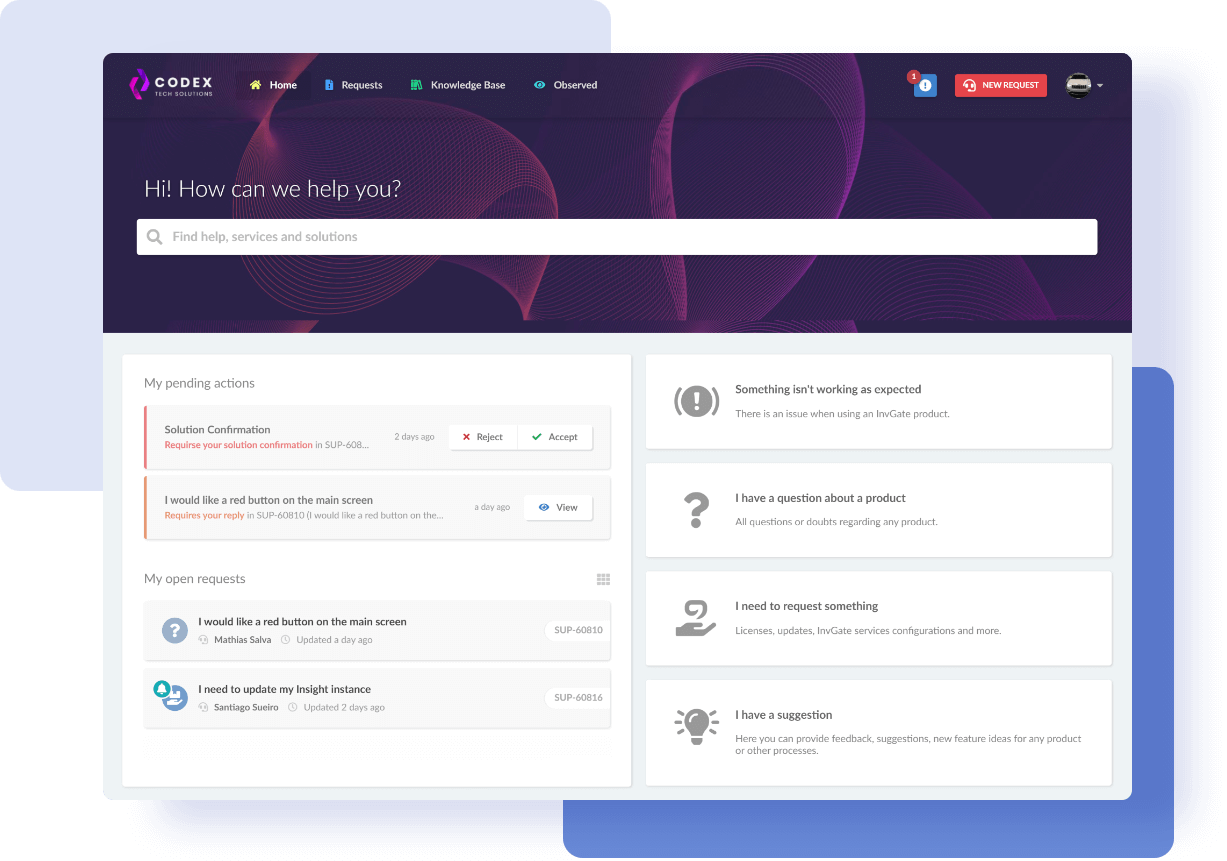
InvGate Service Management includes powerful self-service capabilities, such as a user-friendly self-service portal, an extensive IT service catalog, and a knowledge base. These features empower end-users to find answers to common issues, access IT services, and leverage self-help resources, reducing the burden on IT teams and improving overall efficiency.
7. Comprehensive reporting and analytics
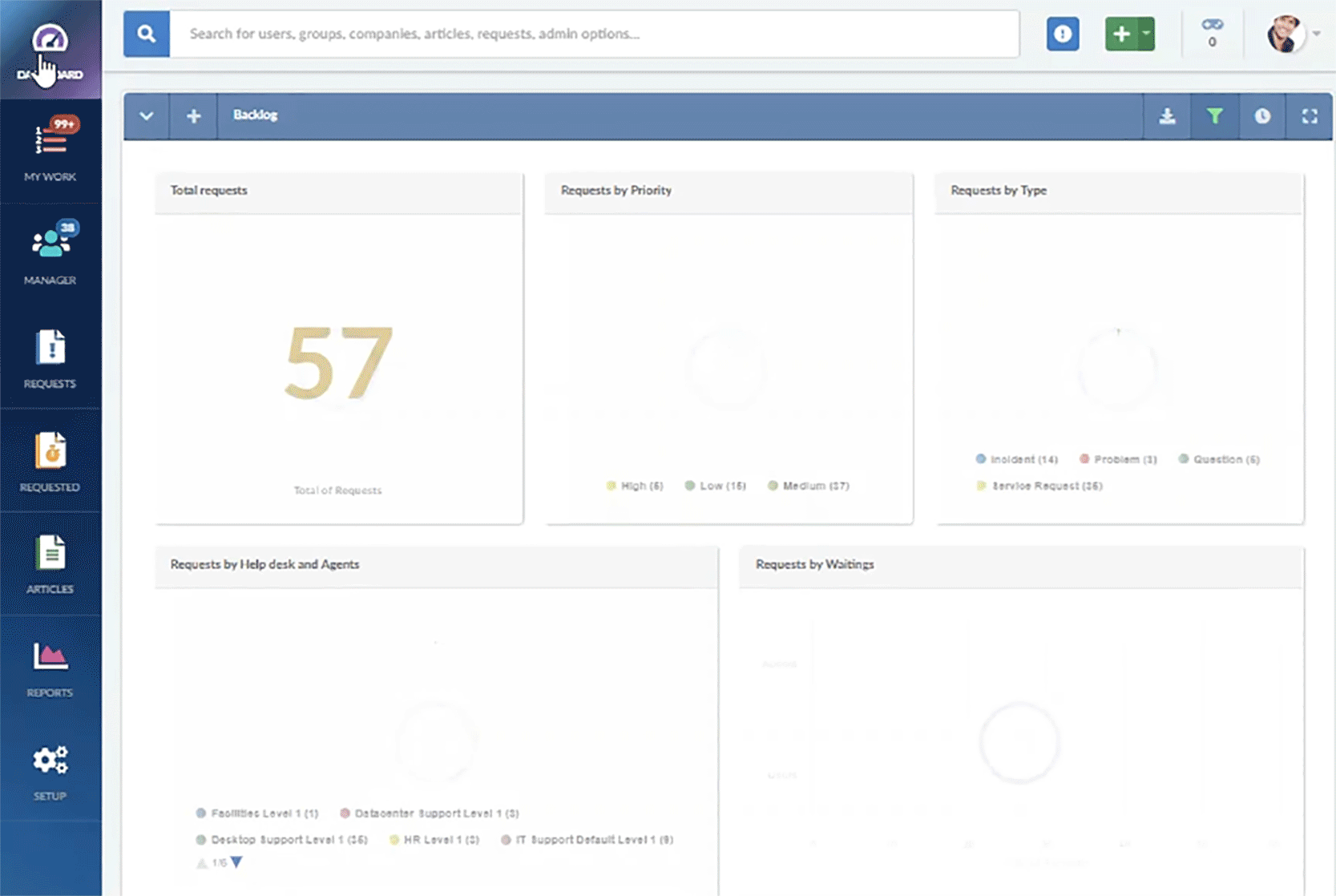
InvGate Service Management provides comprehensive reporting and analytics features, offering valuable insights into IT operations and performance. With a wide range of pre-built reports and dashboards and the flexibility to create custom reports, IT teams can analyze data and make data-driven decisions for service improvement.
8. AI-powered features
InvGate Service Management incorporates AI-powered features, including support assist and AI-Improved Responses. Support assist leverages machine learning algorithms in automating ticket categorization and routing, enhancing the efficiency of Ticket Management. Response suggestions use AI to assist agents in crafting ticket responses, saving time, and improving the quality of customer interactions.
Next steps
Choosing the right ITSM solution is a critical decision that can have a significant impact on your organization's IT service delivery and overall success. Taking the time to carefully evaluate your options will put you on the right path to implementing a solution that best meets your needs.
To explore how InvGate Service Management can enhance your business operations, schedule a meeting with our experts or explore our live demo.
















